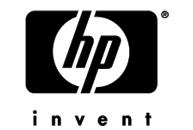Market
For all the remarkable advancements of recent years, nothing has matched the power of information technology to change our world. It’s fundamentally altering our lives in the three places we all live our lives: at work, at home, and at play. In the next decade, it will take us to places we can’t even imagine today. For all that change, there is only one company that has taken a leadership role in all three of those areas: HP.
HP is a company unlike any other. As the number-one consumer technology company in the world as measured by revenues, the number-one small and medium-sized business technology supplier in the world, and a leading provider of technology products, solutions, and services to large enterprises and institutions everywhere, HP today serves more than one billion customers around the world. With a portfolio that spans from palmtop to NonStop computers, from printers that sell for $49.99 to multimillion-dollar commercial publishing systems, HP is delivering vital technology for business and life.
{viewonly=registered,special}Achievements
Today, HP employs 142,000 employees in 176 countries, doing business in 43 currencies and 15 languages, with leadership on every continent in every major market on earth. In fiscal year 2003, HP had sales of $73.1 billion. As a company, it has always exemplified the idea that great organizations are defined not simply by their capabilities, but by their character.
As capabilities go, HP’s 2002 merger with rival Compaq changed the computing landscape. Today, HP is in a lot of places you see every day. It powers more than 100 stock and commodity exchanges, including 14 of the world’s largest. It supports 95 percent of the world’s largest securities transactions. It helps process two out of every three credit card transactions worldwide and three out of every four electronic funds transfers. For more than 100 million cell phone subscribers, HP software identifies them when they turn on their phones and allows them to place calls. Every day, more than 167 million pictures are taken using HP digital cameras.
HP is also one of the world’s top ten innovators, generating more than 11 new patents a day, the highest rate of innovation in the company’s history.
The company is equally well known for its character, recognized as one of the world’s leading global citizens, with the number-six ranking on Fortune magazine’s most admired global companies list. HP’s involvement takes many forms, from environmentally sound products and services to investments in education, from matching employee contributions to bridging the digital divide by providing underserved communities with affordable and sustainable technology solutions. Today, HP is one of several companies working to evolve a new model of global citizenship, marrying social concerns with long-term business goals, with new initiatives from India to South Africa.
History
A plaque outside a small house at 367 Addison Avenue in Palo Alto, California, recognizes the one-car garage out back as the “Birthplace of Silicon Valley.” It was here that Bill Hewlett and Dave Packard first started HP in 1939. What they launched wasn’t only the foundation for modern technology, but the roots of modern management.
Consider HP’s history of innovation. First, there was the audio oscillator used by the Walt Disney Company in 1939 to create the landmark movie Fantasia. From the world’s first personal computer (called a desktop calculator), in 1968; to the first handheld scientific calculator, the HP-35, which made the slide rule obsolete; to the first handheld programmable; all the way up through the HP LaserJet and inkjet technology, the first IBM-compatible PC; the first minicomputer and clustering technology that is the underlying technical foundation for grid computing, the companies that now make up HP built the foundation for modern technology.
Perhaps HP’s most far-reaching innovations were on the management side, pioneering many of the policies that help employees balance the demands of work and life. HP established its open door policy in the 1940s to create an atmosphere of trust and mutual understanding. Managers also practiced a technique dubbed “management by walking around” — a departure from the rigid management structures of its day. HP was among the first companies to offer a corporate code of values and responsibilities — the famous
“HP Way” — as well as benefits such as catastrophic health insurance, profit sharing, and tuition assistance. In 1967, HP also pioneered the concept of flexible working hours, or “flextime.” And, HP was one of the first companies to encourage telecommuting.
Product
For consumers, HP is simplifying technology to help people enjoy more of life — extending HP’s leadership in imaging, printing and home computing into the fast-growing digital photography and entertainment markets. People can use products like the world’s first eight-ink consumer photo printer to create photos that are as true-to-life as their memories. The HP DVD Movie Writer — another industry first — can turn VHS tapes into DVDs to preserve for future generations.
HP helps small and medium businesses get more out of their technology investments — more expertise, more reliability, more value, and an ownership experience that lets them focus on managing their businesses. The HP Smart Office solution bundles reliable computing infrastructure, PCs, notebooks, and printers that work easily together, with helpful financing options and dedicated service and support.
In a world where every business decision triggers a series of IT events, CIOs at the world’s largest companies and institutions must balance traditional IT requirements — managing costs, mitigating risk, increasing quality of service — with a new requirement to improve business agility. Based on its own experience, HP launched its Adaptive Enterprise initiative to help businesses capitalize on change and get more from their IT investments.




